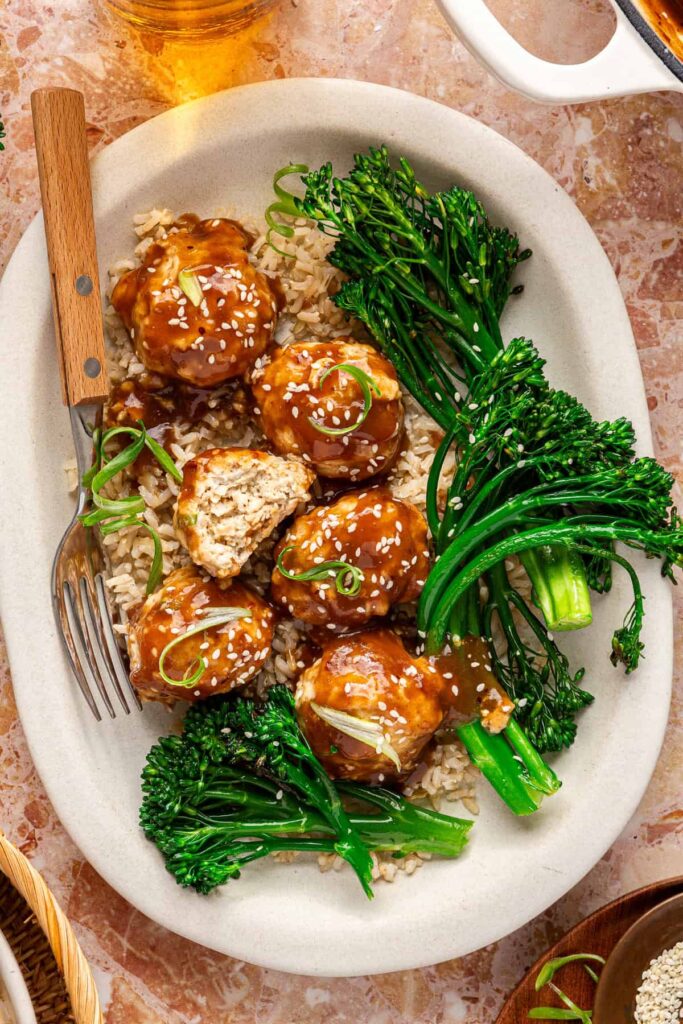
Ahh yes, I’m back to talk about my absolute favorite topic: PROTEIN. We’re going on 3+ years of my protein era, and I just don’t think I’ll ever go back. Adopting a high-protein diet seriously changed so many parts of my life and in the most beneficial ways – I’ll never stop sharing resources and education on it because I think making a few simple changes to your diet can change so many lives!
A high-protein diet might sound like a fitness fad, but the truth is: it’s a game-changer for just about anyone who wants to feel better in their body. And there is sooo much research to support it!
Whether you’re just starting your health and wellness journey and you’re not sure where to begin, or if you’ve been around for a bit and you’re ready to take your fitness to the next level, a high-protein diet can make a huge difference and doesn’t have to be complicated.
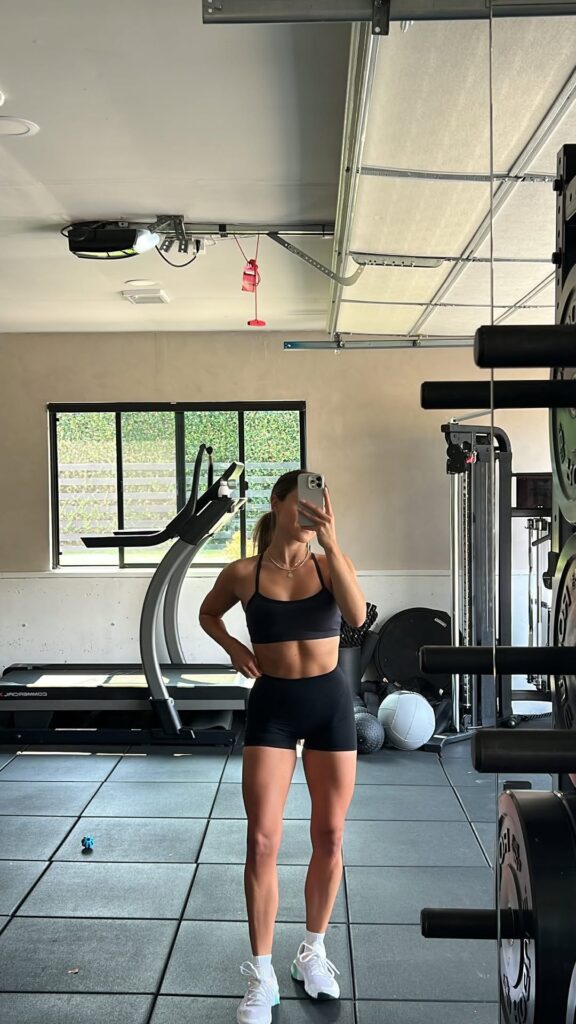
How Does a High-Protein Diet Work?
When you follow a high-protein diet, you’re giving your body the tools it needs to thrive. Protein is not only responsible for muscle growth, but it repairs damaged cells in the body, keeps your blood sugar balanced, and will actually keep you full after a meal. Here’s what that can mean if you’re serious about adopting this diet:
- Stronger, leaner muscles – especially important if you’re working out or want to stay strong as you age.
- Increased satiety – protein helps you feel full longer, which means fewer cravings and more stable energy throughout the day.
- A slight metabolic boost – protein requires more energy to digest, so your body burns more calories in the process.
What Changes Can You Expect on a High-Protein Diet?
Here is the super exciting part. By incorporating enough high-quality protein sources with every snack and meal, your body will change, your confidence will change, your energy levels will change, your mental clarity will change – should I go on?? I couldn’t believe how amazing I felt, physically and mentally, after just a few days of eating a high-protein diet. Everyone’s results will vary, but here are some common benefits people notice within the first few weeks of increasing their protein intake:
- Better muscle tone – even without heavy lifting, protein helps preserve lean muscle mass.
- Improved energy levels – no more dramatic afternoon crashes or endless hunger.
- Reduced cravings – especially for sugary or highly processed foods.
- Fewer blood sugar dips – which means more focus, more stamina, and fewer mood swings.
How Much Protein Do You Actually Need?
The magic question! I wish I could give you a simple number that made it easy to start your journey, but there is a range of the ‘right amount’ of protein for everyone. What’s right for me probably isn’t going to be what’s right for you! This range is highly dependent on your lifestyle, activity levels, and overall goals, but the general recommendation for muscle maintenance is 0.8 to 1 gram of protein per pound of body weight. So if you weigh 150 pounds, aim for 120–150 grams of protein daily.
This might sound like a lot, and at first it might feel like more than you’re used to eating! But once you build your meals around high-protein foods, it’s easier than you think. Your body will adjust to eating more high-quality proteins like meat, dairy, etc. Just remember: consistency matters more than perfection.
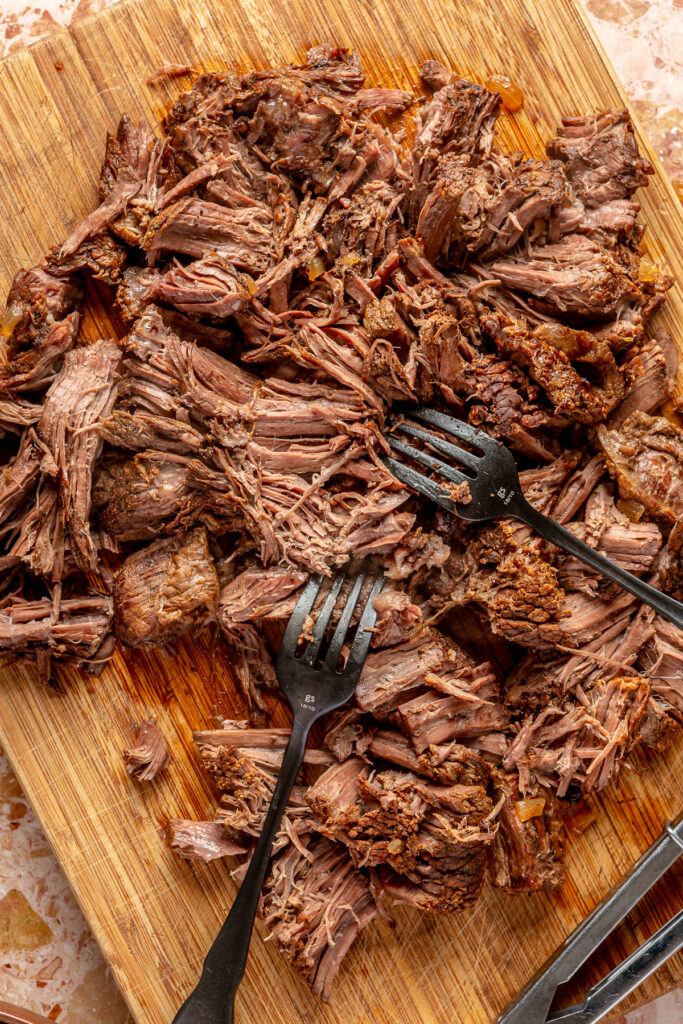
Getting Started: Simple Tips to Eat More Protein Without Overhauling Your Life
Adopting a high-protein diet doesn’t mean eating chicken breast six times a day, or never being able to enjoy your favorite treats. I hope this list shows you how simple it can truly be:
- Center your meals around protein. Choose your protein first, then build the rest of the plate. Think: eggs, ground beef, chicken thighs, salmon, shrimp, greek yogurt, etc. I tend to prefer animal proteins vs plant proteins – in general, it’s easier to get more protein in through animal sources and I like the additional nutritional benefits that come with it. Your goal should be at least 20 grams per meal, I like to aim for about 40 grams per meal!
- Snack smarter. Keep high-protein options like boiled eggs, cottage cheese, yogurt, beef jerky, or a quick protein shake on hand.
- Front-load your day. Start with a protein-packed breakfast like protein oats, a smoothie with protein powder, or eggs with avocado toast. Read more about that in this post.
- Track it—just for a week. Use an app or notes to get a rough idea of your current protein intake and where you can add more. It doesn’t have to become apart of your routine, but tracking just your protein intake for a few days can be so eye opening. Seriously, try it!
- Use simple protein boosters. I’m always looking for sneaky ways to add protein to my meals, snacks, and treats. It can be as simple as adding hemp seeds to oatmeal, Greek yogurt to sauces, or mix collagen into coffees and smoothies. I have a tab dedicated to high-protein recipes on my website for you to use!
The Bottom Line
A high-protein diet isn’t just about weight or muscle—it’s about feeling strong, steady, and nourished. Here’s the thing: you don’t have to be perfect. You don’t have to follow strict rules. You just need to eat a little more protein, a little more often.
If you’ve been wondering if you should try it, this is your sign. Start with one high-protein meal a day, then build from there. Your energy, cravings, and overall mood might surprise you.
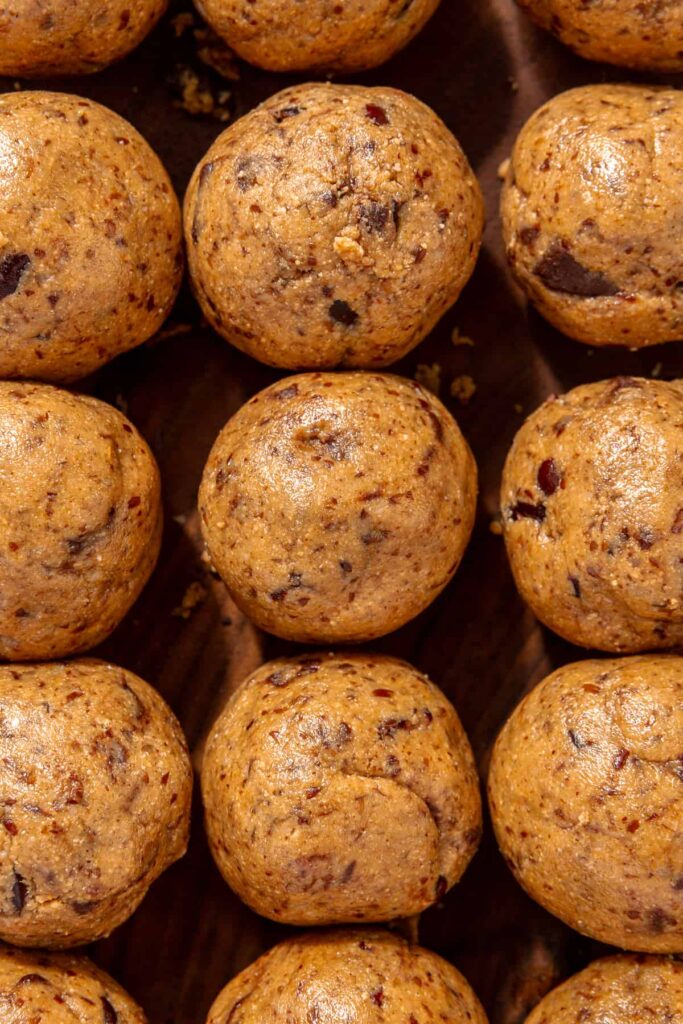
Need Help Getting Started?
Ok, here’s EXACTLY how to start!
- For 2-3 days, use a free app to track just your protein intake. Eat like you normally do, and just track without any pressure. It will be a great baseline for you to work from as you increase your protein.
- After tracking, see when in your day you need more protein. Is it every meal? Is just your breakfast weak? Make a few goals based on what you find, and start small! Maybe for the first few days you just focus on getting 35 grams of protein with your breakfast before messing with any other meals or snacks.
- Get serious about breakfast, lunch, and dinner. Find a few meals that you love, are easy and quick to cook, and you can fall back on when you’re feeling overwhelmed with this lifestyle change. You’ll start to notice a major change in your energy and satiety levels by this point!
- Adjust your snacks to include a protein source! If you’re snacking on just an apple, add a beef stick, sliced cheese and crackers, or a protein shake to go with it. Making these little changes should be the last thing you focus on, but you’ll be amazed by how different you feel just by snacking smarter.
- Take it to the next level. Pairing eating a high-protein diet and lifting weights will change. your. life. My 8-week gym guide, GOOD // SWEAT Strength, is packed with nutrition information to help you achieve your high-protein goals, and teach you everything you need to know about lifting weights.
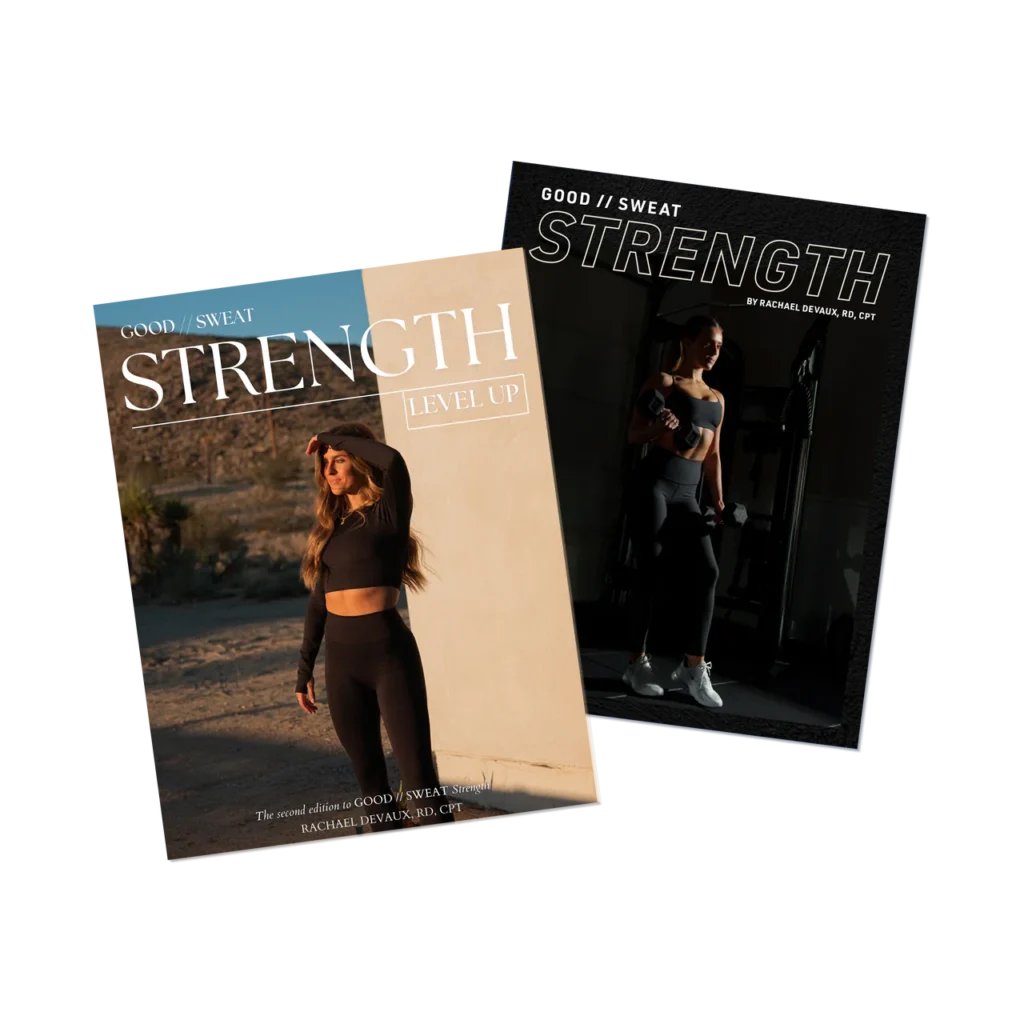



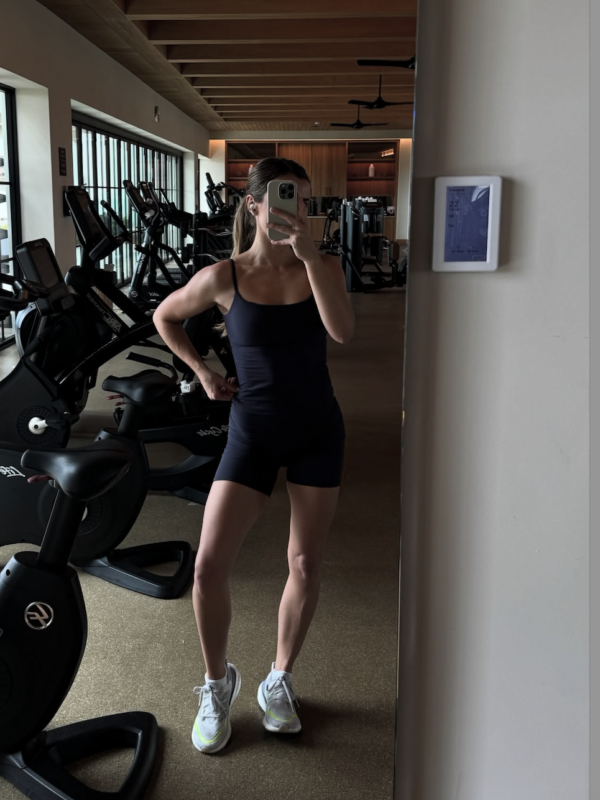

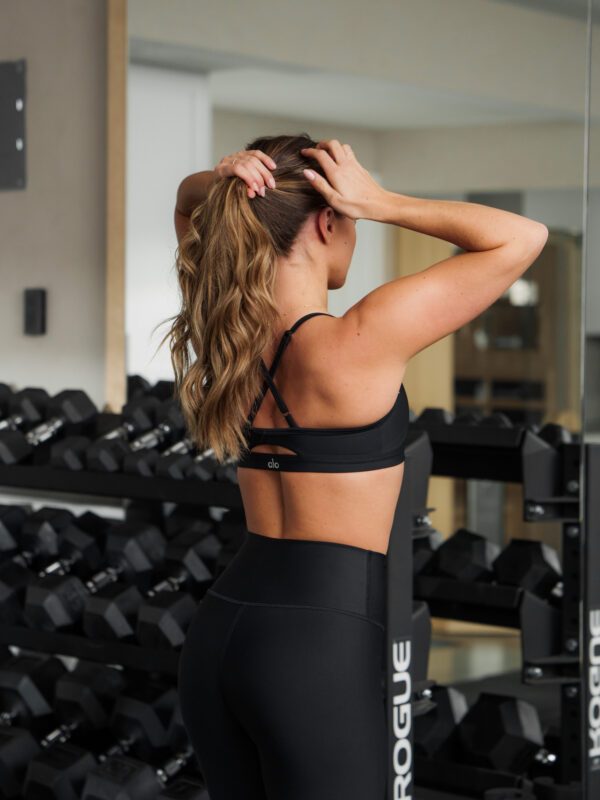










Cool Post.